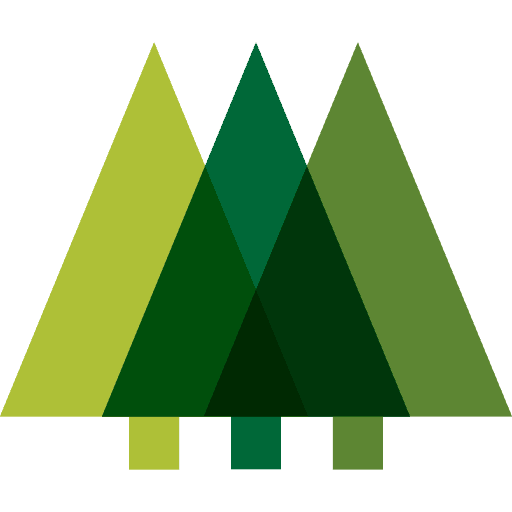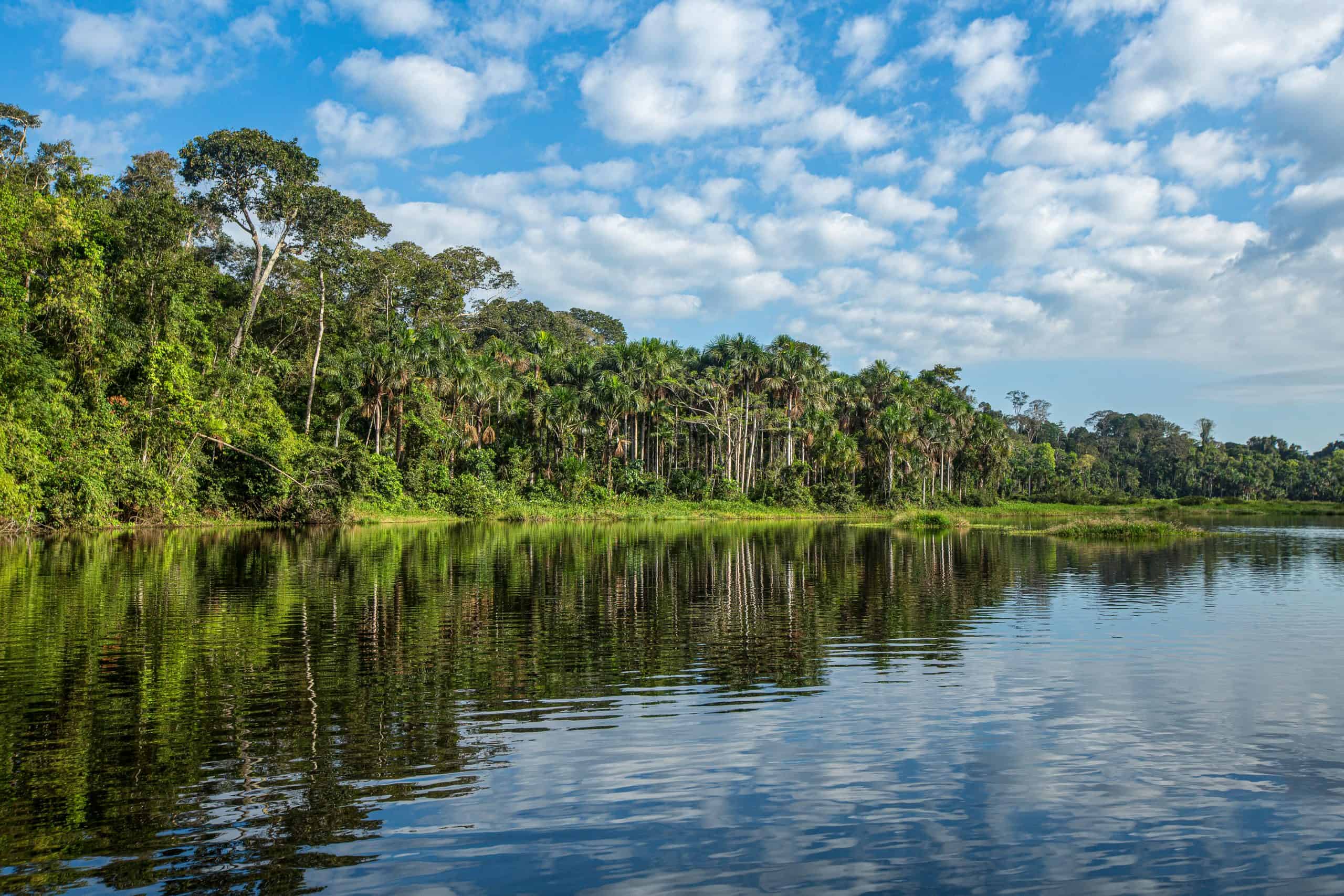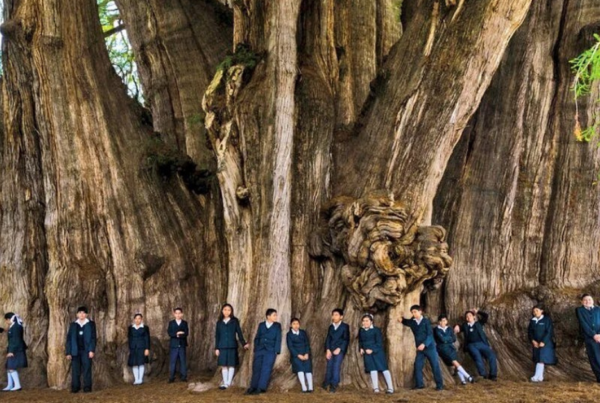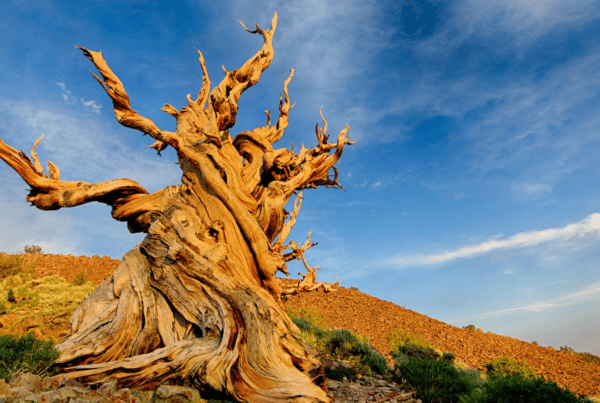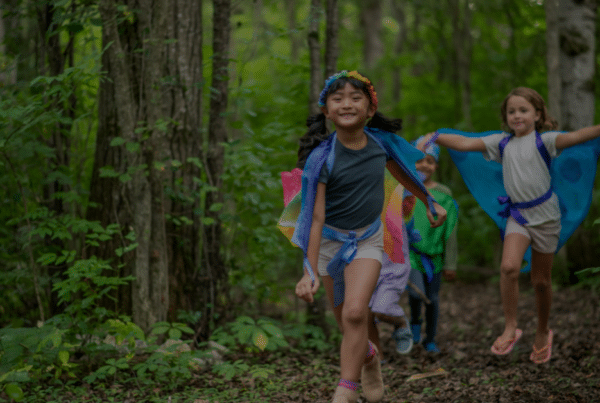Why are trees so important for climate change? Can planting trees help fight the climate crisis? How many do we need to plant? And how do you decide whether you should plant a tree or do something else?
Let’s start with the basics!
How trees reduce global warming and fight climate change
Trees are nature’s greatest carbon sink. They absorb it from the atmosphere, convert it into glucose for their cells, and store it in their leaves, branches and roots as they grow. (And then they ‘exhale’ oxygen for us to use – bonus!). That’s how they help regulate the climate (and clean the air) – among many other things…
The other benefits that trees provide
They also do much more than just absorb CO2. They are a renewable resource, and they provide many benefits for humans – including food production, fuel, medicine, building materials, recreation, shade, beauty, wildlife habitat, clean water and air, soil conservation, erosion control, flood protection, windbreaks, and much more.
They also play a vital role in protecting our planet from extreme weather events such as hurricanes, tornadoes, drought, flooding, wildfires, heat waves, and cold snaps. They act as barriers between land and sea, helping to slow storm surges during coastal storms. And they help stabilize soils, preventing them from eroding into rivers and streams. When it comes to reducing risks associated with severe weather, trees are critical! Especially since the effects of climate change are expected to make all of these worse.
All of these are called ecosystem services, and they’re critical to life on Earth.
Yes, there are other options, both for reducing emissions and for removing carbon from the atmosphere. But only trees (and forests) provide all these other benefits at the same time.
How do we use trees to stop climate change?
There are two ways: stopping deforestation and planting new trees.
Deforestation is actually one of the biggest sources of emissions – around 10%, more than all cars and trucks combined! In addition, it has been estimated that deforestation accounts for up to 20 percent of all greenhouse gas emissions in tropical countries.
So, one way of stopping climate change is protecting existing rainforests and preventing further destruction of natural habitats. In turn, that means preserving old-growth forest ecosystems, which contain large numbers of species and high levels of biodiversity. It also means conserving areas where people live, work, and recreate. Some say this can’t be used to reach net-zero emissions, because it’s preventative, and doesn’t actually remove anything from the atmosphere. But removing CO2 won’t help us if we keep putting more in.
(Aside: This is one of the reasons that some say we should focus on cutting fossil fuels first. That’s true! But deforestation is still a huge source of annual emissions; it’s easier for a regular person to punch above their weight by helping to stop it; and it gives you the biggest bang for your buck – you help biodiversity, wildlife, people, and all the other things we talked about above.)
The other way is to plant trees. It seems like a great, simple solution, but not everyone agrees. Some say that it doesn’t help climate change mitigation as much as people think it will. And others say that it is the best thing we can do.
So who is right? Let’s look into this below.
Is planting trees the best way to combat climate change?
To answer that, we have to figure out what we mean by ‘best’. That’s a complicated question, but we can definitely say that any climate change solution needs to have a major impact and work fast. And finally, we should probably look at whether there are any downsides.
How much potential do trees have to address the climate crisis?
Theoretically, a lot. Some estimates suggest that a global reforestation effort in which we replant up to 800 million hectares worldwide could give us 300 billion tonnes of carbon absorption over 25 years [1]. Others suggest that 900 million hectares could absorb around 200 billion tonnes [2]. Overall, this would be about a quarter of atmospheric carbon[12].
The devil lies in the details, as they say. Those estimates require the new trees to grow into a mature forest. That takes time – decades at least. And it will only happen if the saplings are cared for immediately after planting, and then allowed to mature naturally.
That often doesn’t happen. Many tree planting initiatives don’t plan for any sort of care – so trees often don’t survive[3]. And some countries are reforesting now with the intention of harvesting and replanting later. This means that many of these ecosystems will never reach maturity – and that planting trees won’t have as big of an effect as we think it might.
Aside: How many trees does it take to offset one person?
Let’s bring the estimates down to something real. Some estimates suggest that the average mature tree can absorb around 50 pounds of CO2 a year. That means 20 would absorb 1000 pounds, or about half a tonne, once fully grown. (Until then, it’s even less.) People in the United States produce around 15.5 tonnes a year, so you’d need 620 fully grown trees[13].
How many trees could be planted on Earth?
As you probably noticed, the above estimates require land – a lot of it. It’s one thing to say that the planet has this enormous tree restoration potential, but it’s another to figure out whether we can actually plant the trillions of trees that would be needed to realize that potential.
Unfortunately, the planet doesn’t really have a spare billion or two hectares lying around unused. If people aren’t living on the lands, they’re being used for agricultural production. Or they’re grassland or some other biome which can’t be converted without losing biodiversity.
If we stuck to only non-croplands, reforestation could sequester up to 100 gigatons (1 billion tonnes) of carbon. That’s a far smaller number, and it’s only worth about 10 years of current annual emissions. What’s more, it would take about a century to capture that much [14].
How quickly can tree planting make a difference to climate change?
Small, newly planted trees can only absorb so much carbon, so it usually takes several years before they begin making a difference. According to the UK’s Royal Society, it takes them at least 10 years to reach their maximum sequestration rate. They’ll continue at that rate until they mature, which, depending on the species, will happen after around 20 to 100 years[1].
Which means that in the short term, they won’t do much. But don’t take our word for it. Here’s William Moomaw, lead author for five reports of the Intergovernmental Panel on Climate Change (IPCC):
[Tree planting is a great thing] to do, but [it] will not make much of a difference in the next two or three decades because little trees just don’t store much carbon. Letting existing natural forests grow is essential to any climate goal we have[4].
There’s also the problem of how long it takes to actually get trees in the ground. One NASA climate scientist, Sassan Saatchi[15], suggested that “reforesting an area the size of the United States and Canada [1-2 billion hectares]… could take between one and two thousand years”.
We definitely don’t have that long! Plus, that would mean planting a million hectares a year, at Saatchi’s suggested density of 50-100 per hectare (to create appropriate canopy cover). And that would require us to really ramp up investments, for example for seedling production. Which also takes time.
So if your aim is to cut down on carbon emissions, then planting trees probably won’t get you there quickly enough. And if cutting emissions is our priority, then let’s ask the following question.
What is better for storing CO2: young or old trees?
As it turns out, the answer might just be old trees.
A study of 403 tropical and temperate species found that for 97% of the species, trees grew faster as time went on. Which meant that older trees absorbed more CO2 from the atmosphere. The paper says:
“At the extreme, a single big tree can add the same amount of carbon … within a year as is contained in an entire mid-sized [one].”[16]
And another study – of 5 million trunks! – showed that the largest 1% stored about 50 percent of the biomass.[18]
So now you know that old trees are more important for CO2 – because they store it more quickly, and because they already hold more.
But nobody ever just plants one seedling – most reforestation goals involve millions of trees. That almost turns it into a forest.
Do planted trees hold as much carbon as an existing forest?
Generally, the answer is also no. Scientists have estimated that regrowing tropical forests can store around 6 tonnes of carbon per hectare per year in the first 20 years. After that, they slow down, and the final average is ~3 tonnes per hectare per year over 80 years[8]. That adds up to 240 tonnes per hectare.
On the other hand, old-growth tropical forests hold up to 418 tonnes per hectare – today[9].
Some estimates have suggested that even after 85 years, replanted trees store only around 83% as much as an undisturbed forest, and their roots only store about 50-75% as much [6]. Restored natural forests are probably the best option – they can be up to 40% more effective than single-species tree plantations [5] – but they will still take up to 70 years to store as much as the original ecosystem. And that’s assuming they are protected from disturbances[5,4].
Another study found that secondary forests in the Amazon have offset less than 10% of the emissions caused by rainforest destruction, even though they cover 30% of the total deforested area.
So, imagine if we cut down that old-growth. We’d release 418 tonnes immediately.
If we replanted, we’d get 6 tonnes back this year.
And, after 80+ years, if it survives, we’d finally get most of the rest of it back.
Maybe.
The risks of planting billions of trees to slow climate change
We’ve explained above why it could be too slow, or too uncertain. Here, we’ll cover some of the reasons it could go wrong after the fact.
Seedlings can die too easily
Trees suffer all sorts of stresses in their lifetimes (which, unlike ours, can be multiple centuries long). There are natural disasters like fires, droughts, or floods, plus other disturbances like pests, diseases, or animals eating branches or leaves. Normally, old, healthy forests develop resilience and resistance to deal with both of these. Resilience is the ability to recover from a major disturbance, like a fire, while resistance is ability to recover from minor, long-term disturbances, like animals eating leaves. Plus, old trees have huge trunks, their roots extend deep into the ground, and they can’t be pushed around very easily. And there’s a lot of different species in the forest, each of which play a different role and which help support the entire ecosystem.
But a tree seedling isn’t like that. They’re light, thin, and short, and they can be moved easily. (Else, you wouldn’t be able to plant it in the first place!)
Unfortunately, this also means they’re weak. They have few leaves and branches, they are thin, and their root systems are quite shallow. And quite often, they have little diversity around them.
What does that mean?
Pests, diseases, and natural disasters
Seedlings have a higher risk of dying from pests or diseases or natural disasters – they simply haven’t developed the ability to cope with stress. For example, in the Amazon, areas with tall, older trees are three times less sensitive to variations in precipitation (generally rainfall) than ones with shorter, younger trees. This is because older roots go deeper, which lets them access more soil moisture. So they can keep growing during droughts[10]– which will become worse as the climate emergency worsens.
Logging
Young trees are often easier to cut down than old ones[11]. It’s only natural: think how much stronger a fully grown adult is compared to a baby or child.
In the Amazon, new forests only last 5-8 years on average. Even in Costa Rica, which has doubled its forest cover in the last years, half of them disappear within 20 years after being planted – along with the CO2 they were supposed to store.[11] (‘Trees, we hardly knew ye!’)
Reversing carbon absorption
When reforestation goals fail – i.e. when seedlings don’t survive – it can cause a multitude of problems. Yes, the expected sequestration is gone, but that’s just the beginning. If anyone has used it to offset their carbon footprint, it’s actually become a carbon source. Luckily, there are some safeguards built into the offsetting mechanisms, but it’s obviously not ideal.
Meanwhile, if an existing forest got chopped down, it’s a double whammy. Not only did we lose the potential sequestration from the seedling(s) that died, but we also have higher emissions of greenhouse gases, because we released everything that was already stored.
Is planting trees bad for the environment?
Yes – in some cases. For example, monocultures. Too many of the same type of tree planted too close together can cause poor growth and low survival. They also probably won’t provide adequate habitat for wildlife or biodiversity. And since there won’t be any diversity, they won’t be very resilient. If the trees are not native, it might be even worse: they might introduce non-native pests or diseases.
Or when tree planting programmes replace native ecosystems, like grasslands, savannas, or wetlands. These are already rich ecosystems in their own right, and shouldn’t be converted to forest.
Another example is when they’re actually plantations that will be repeatedly regrown and harvested, or when they use non-native trees. These often go hand-in-hand: many projects use fast-growing foreign species like eucalyptus, because they can theoretically sequester large amounts of carbon dioxide very quickly. But these plantations store much less than they would if they were allowed to regrow naturally. They also do nothing for biodiversity, and in the worst case, negatively impact it.
So if you want to be sure that you’ve made a positive impact on the environment, consider investing in forest conservation instead of just planting trees.
Should you plant trees to fight climate change?
It depends where, and how.
Many projects focus on smallholder agroforestry in the tropics. These often improve ecological conditions on farms, create alternate livelihoods, give people alternatives to using wood for fuel, and so forth. And these are great – assuming they plant native species, don’t displace people, don’t affect local crops, and so forth.
Similarly, if you are restoring original forest cover, encouraging natural regrowth, and thus truly reforesting, then it’s excellent. Obviously, the best way to do this is by using native plants, which will naturally attract wildlife back into the area.
These are just some good options. But no matter which you choose, remember that it’s a long-term thing.
And we’re trying to stop climate change today. To save animals and ecosystems. And to support local and indigenous people and communities.
Which is better: planting new trees or protecting existing forests?
Really, we should do both. But if we have to pick one, we’d say our first priority should be preserving existing, old forests.
Why?
Forest carbon storage is exceptional – right now.
Not only do forests continue to remove carbon every year; they also store huge amounts in their trunks and roots as well as in the undisturbed soil beneath.
They are one of the world’s largest carbon sinks – in fact, they store more than the atmosphere!
To understand more about why they’re so important for climate change, see here.
Forests house immense, irreplaceable biodiversity.
Forests are important and intricate ecosystems. They are home to incredible biodiversity and provide sanctuary and habitat for thousands of species. In fact, they are linked to an estimated 80% of animal and plant life [14]. And half of the world’s known terrestrial species can be found in tropical rainforests – that take up only 6% of the planet’s land [17].
We are in the midst of a sixth mass extinction. Deforestation is likely the biggest contributor. And all that biodiversity typically doesn’t come back, even after restoration. (We have a lot more about this coming soon. To be the first to hear about it, click here.)
Protecting forests also benefits people
Many indigenous peoples and forest communities are deeply connected to their lands. Their cultural identities are often closely linked to intact forests and local plant and animal species. They also often rely heavily on resources for basic needs.
When we lose these old forests, these communities lose their livelihoods and cultures, and a source of resilience. Traditional ways of life also become impossible. This drives people off their lands, and results in a loss of cultural identity.
By now, you can probably guess where we’re going with this. Young forests made up of newly planted trees don’t have the size, diversity, or density to provide everything people might need, like tree bark, timber, fruits, berries, medicinal plants, cultural importance, or species that are important for food and cultural reasons. Only the old ones can do that.
Conclusion
Now you know why tree planting can’t replace forest conservation – whether for climate, biodiversity, wildlife, or people.
So next time you see someone claim that they’re saving forests by planting trees… think twice.
If you want to have the biggest impact on climate change now, it’s best to protect an existing forest. Not only do they absorb more carbon every year than a young one, but they also already store massive amounts – which we are at risk of losing because of deforestation.
Once these ancient ecosystems are gone, they’re not coming back. And if we don’t save them for future generations, what will we be leaving them?
That’s why we at Stand For Trees put all our efforts into protecting existing forests. Our projects prevent 700 million tonnes of carbon emissions in 4.5 million hectares of tropical forests.
(To make that up with tree planting, you’d need to plant 32 million hectares – today.)
Click here to support one of our projects and save forests – so we don’t need to plant trees.
References:
[1] https://royalsociety.org/-/media/policy/projects/greenhouse-gas-removal/royal-society-greenhouse-gas-removal-report-2018.pdf[2] https://science.sciencemag.org/content/365/6448/76
[3] http://apps.worldagroforestry.org/downloads/Publications/PDFS/WP20001.pdf
[4] https://e360.yale.edu/features/why-keeping-mature-forests-intact-is-key-to-the-climate-fight
[5] https://news.mongabay.com/2019/04/natural-forests-best-bet-for-fighting-climate-change-analysis-finds/
[6] https://royalsocietypublishing.org/doi/full/10.1098/rspb.2013.2236
[8] https://onlinelibrary.wiley.com/doi/epdf/10.1046/j.1526-100x.2000.80054.x
[9] https://news.mongabay.com/2013/08/old-growth-trees-store-half-rainforest-carbon/
[10] https://www.nature.com/articles/s41561-018-0133-5
[11] https://www.sciencemag.org/news/2020/09/plant-trees-or-let-forests-regrow-new-studies-probe-two-ways-fight-climate-change
[12] https://insideclimatenews.org/news/27052020/trillion-trees-climate-change/
[13] https://theconversation.com/how-would-planting-8-billion-trees-every-year-for-20-years-affect-earths-climate-165284
[14] https://www.imperial.ac.uk/news/199473/qa-is-planting-trees-answer-climate/
[15] https://climate.nasa.gov/news/2927/examining-the-viability-of-planting-trees-to-help-mitigate-climate-change/
[16] https://www.cbc.ca/news/science/older-trees-grow-faster-than-younger-ones-study-finds-1.2499298
[17] https://www.theguardian.com/environment/2019/jul/04/planting-billions-trees-best-tackle-climate-crisis-scientists-canopy-emissions

